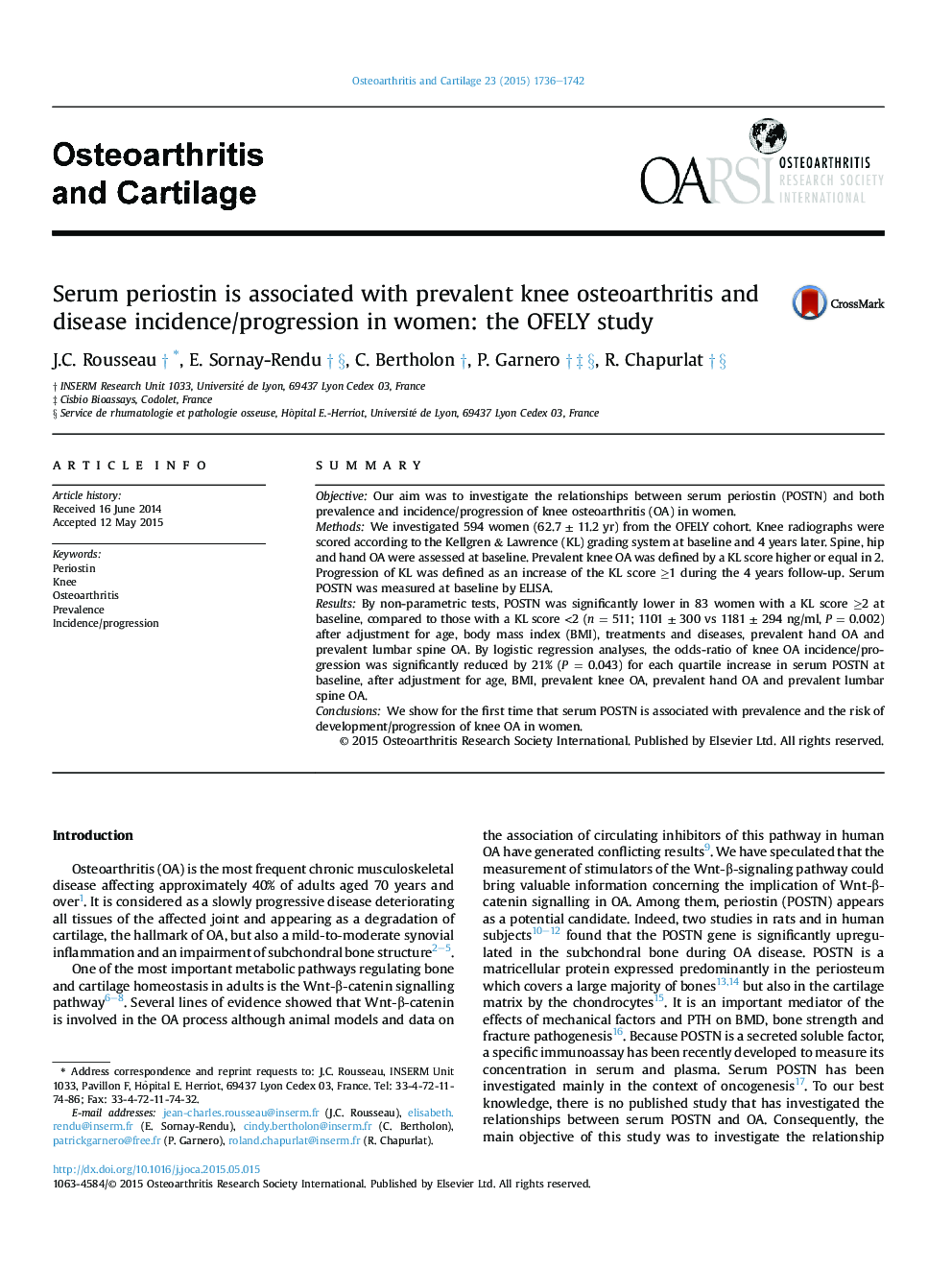| Article ID | Journal | Published Year | Pages | File Type |
|---|---|---|---|---|
| 3379168 | Osteoarthritis and Cartilage | 2015 | 7 Pages |
SummaryObjectiveOur aim was to investigate the relationships between serum periostin (POSTN) and both prevalence and incidence/progression of knee osteoarthritis (OA) in women.MethodsWe investigated 594 women (62.7 ± 11.2 yr) from the OFELY cohort. Knee radiographs were scored according to the Kellgren & Lawrence (KL) grading system at baseline and 4 years later. Spine, hip and hand OA were assessed at baseline. Prevalent knee OA was defined by a KL score higher or equal in 2. Progression of KL was defined as an increase of the KL score ≥1 during the 4 years follow-up. Serum POSTN was measured at baseline by ELISA.ResultsBy non-parametric tests, POSTN was significantly lower in 83 women with a KL score ≥2 at baseline, compared to those with a KL score <2 (n = 511; 1101 ± 300 vs 1181 ± 294 ng/ml, P = 0.002) after adjustment for age, body mass index (BMI), treatments and diseases, prevalent hand OA and prevalent lumbar spine OA. By logistic regression analyses, the odds-ratio of knee OA incidence/progression was significantly reduced by 21% (P = 0.043) for each quartile increase in serum POSTN at baseline, after adjustment for age, BMI, prevalent knee OA, prevalent hand OA and prevalent lumbar spine OA.ConclusionsWe show for the first time that serum POSTN is associated with prevalence and the risk of development/progression of knee OA in women.
